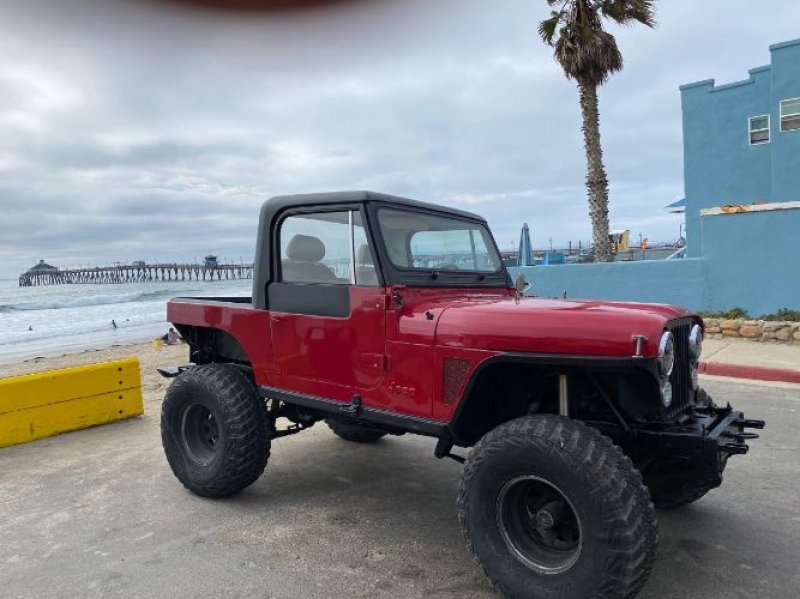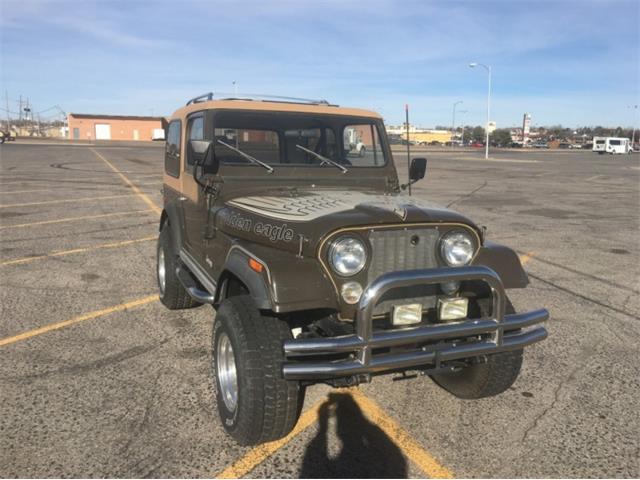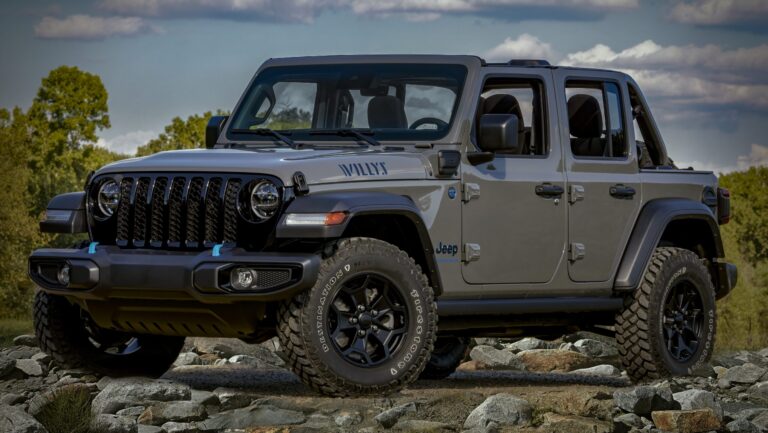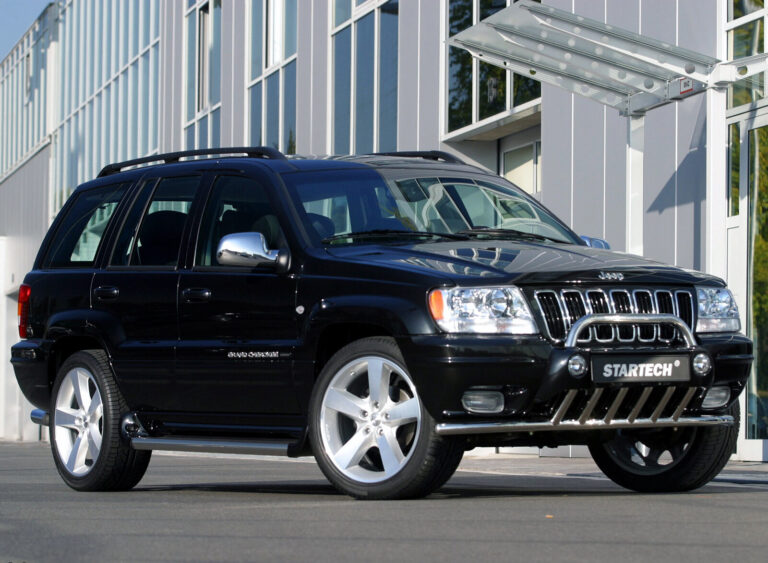1978 Jeep CJ7 For Sale: A Comprehensive Buyer’s Guide
1978 Jeep CJ7 For Sale: A Comprehensive Buyer’s Guide jeeps.truckstrend.com
The 1978 Jeep CJ7 stands as an enduring icon of American automotive history, a rugged testament to simplicity, capability, and an unyielding spirit of adventure. More than just a vehicle, the CJ7 represents a lifestyle—one of open-air freedom, off-road exploration, and a deep connection to the roots of the SUV. For enthusiasts and collectors alike, finding a 1978 Jeep CJ7 for sale isn’t merely about acquiring transportation; it’s about investing in a piece of Americana, a classic that continues to turn heads and conquer trails. This comprehensive guide aims to equip potential buyers with the knowledge and insights needed to navigate the market and make an informed decision when pursuing their dream 1978 CJ7.
The Enduring Appeal of the 1978 Jeep CJ7
1978 Jeep CJ7 For Sale: A Comprehensive Buyer’s Guide
The Jeep CJ (Civilian Jeep) lineage traces its roots back to the wartime Willys MB. The CJ7, introduced in 1976, marked a significant evolution, offering a slightly longer wheelbase than its predecessor, the CJ5, to accommodate an automatic transmission and improve ride quality and stability without sacrificing its legendary off-road prowess. The 1978 model year falls squarely within the golden era of the CJ7, before later changes that some purists consider less desirable.
Its timeless design, characterized by removable doors, a fold-down windshield, and various soft and hard top configurations, offers unparalleled versatility. This open-air experience is a core part of its allure, making it perfect for summer cruising or challenging trails. Furthermore, the CJ7’s mechanical simplicity and robust construction mean it’s relatively easy to work on, with a vast aftermarket support system for parts and upgrades. This combination of iconic styling, practical utility, and DIY friendliness ensures the 1978 CJ7 remains highly sought after, solidifying its status as a true classic off-roader and a valuable collector’s item.
Key Features and Specifications of the 1978 CJ7
Understanding the core specifications of the 1978 CJ7 is crucial for any potential buyer. While modifications are common, knowing the original factory configurations helps in assessing a vehicle’s authenticity and potential.
- Engine Options:
- AMC 258 Straight-Six (4.2L): The most common and arguably most reliable engine choice, known for its torque and durability. It’s a workhorse, perfectly suited for off-road crawling and general use.
- AMC 304 V8 (5.0L): Offered as an upgrade, providing more horsepower and a distinct V8 rumble. While less common, a 304 V8 can offer a more spirited driving experience on pavement.
- Note: Other engines, like the AMC 232 I6 or even the rare 151 "Iron Duke" four-cylinder, were available in other CJ years but are less typical for a 1978 model.

- Transmission Options:
- Manual: Common manual transmissions included the Borg-Warner T-150 (3-speed), Borg-Warner T-18 (4-speed, heavy-duty), and occasionally the Tremec T-4 or T-5 (4-speed or 5-speed, typically with the 258 engine).
- Automatic: The General Motors TH400 (3-speed) was the primary automatic transmission option, paired with the Quadra-Trac full-time 4WD system. Later, the Chrysler Torqueflite 999 (TF999) became common.

- Transfer Cases:
- Dana 20: A robust part-time 4WD transfer case, common with manual transmissions.
- Borg-Warner Quadra-Trac (BW1305/1339): A full-time 4WD system, typically paired with the TH400 automatic. While innovative for its time, it has unique maintenance requirements and can be less desirable for serious off-roaders due to its open differential design unless modified.
- Dana 300: Introduced in later CJ7s (1980+), but some 1978 models might have had a swap.
- Axles:
- Front: Dana 30 (open knuckle).
- Rear: AMC 20 (two-piece axle shafts, prone to bending under heavy stress, often upgraded to one-piece shafts or a Dana 44).
- Suspension: Leaf springs front and rear, providing a durable but somewhat stiff ride.
- Dimensions: Approximately 93.5-inch wheelbase, 153-inch overall length, 68-inch width.
What to Look For When Buying a 1978 Jeep CJ7
Acquiring a classic vehicle like the 1978 CJ7 requires a thorough inspection. These vehicles are nearly 45 years old, and their condition can vary wildly from meticulously restored to rust-ridden projects.
- Rust, Rust, Rust: This is the absolute biggest enemy of any vintage Jeep. Inspect thoroughly:
- Frame: Pay close attention to the areas around the leaf spring hangers, steering box, skid plates, and the rear cross member. Look for flaking, holes, or welds that might indicate repairs.
- Body Tub: Check floorboards (especially under the seats and footwells), rocker panels, inner fenders, cowl area (under the windshield), and the tailgate. Many CJ7s have replacement tubs or significant patch panels.
- Fenders and Grille: Rust can form around the headlight buckets and fender edges.
- Underbody: Inspect the transmission crossmember, fuel tank skid plate, and body mounts.
- Engine Condition:
- Check for oil leaks (common around the rear main seal, valve cover, oil pan).
- Look for excessive smoke from the exhaust (blue for oil, white for coolant, black for rich fuel).
- Listen for knocking, ticking, or strange noises. A pre-purchase compression test can reveal engine health.
- Check coolant condition and oil level/appearance.
- Transmission & Transfer Case:
- Test drive to ensure smooth shifting (manuals) or proper engagement (automatics). Listen for grinding or clunking.
- Engage 4WD (high and low range) to ensure it shifts easily and the transfer case engages without issue.
- Look for fluid leaks around seals and pan gaskets.
- Axles & Drivetrain:
- Check for excessive play in the U-joints on the driveshafts.
- Listen for howling or clunking from the differentials, which could indicate worn gears or bearings.
- Inspect the AMC 20 rear axle for bent axle flanges (a common issue if still original two-piece shafts).
- Suspension & Steering:
- Examine leaf springs for broken leaves or sagging.
- Check shocks for leaks.
- Inspect all steering components (tie rods, drag link, steering box) for excessive play or leaks. "Death wobble" is a known CJ issue, often caused by worn steering or suspension parts.
- Electrical System:
- Test all lights (headlights, tail lights, turn signals, brake lights).
- Check gauges (fuel, temp, oil pressure, voltmeter).
- Ensure the wipers, horn, and heater fan work. Look for shoddy wiring, which can be a fire hazard.
- Documentation: A clear title is essential. Any maintenance records, receipts for parts, or photos of a restoration can add significant value and peace of mind.
- Modifications: Many CJs are modified. Assess the quality of the work. Well-done modifications (lift kits, engine swaps, axle upgrades) can be beneficial, but poorly executed ones can lead to expensive problems.
Types of 1978 CJ7s You Might Find
The market for 1978 CJ7s offers a spectrum of conditions and price points:
- Project Vehicle: These are typically the most affordable, requiring significant work. They might be non-running, have extensive rust, or be incomplete. Ideal for someone with mechanical skills and a dedicated budget for restoration.
- Driver Quality: A running and driving vehicle that might have some cosmetic flaws, minor mechanical issues, or older repairs. Can be enjoyed immediately but will likely require ongoing maintenance and improvements.
- Good Condition / Well-Maintained: These CJs are generally solid, with minimal rust, good mechanicals, and presentable aesthetics. They might have minor upgrades or original parts in good working order. These are often the sweet spot for buyers looking for a reliable classic.
- Restored / Frame-Off Restoration: These vehicles have undergone extensive work, often to original specifications or with tasteful upgrades. Prices will be significantly higher, but the work has ideally been done for you. Verify the quality of the restoration thoroughly.
- Show Quality / Concours: Rare and highly valuable, these CJs are either original, low-mileage examples in pristine condition or have undergone a professional, no-expense-spared restoration to factory new standards. These are primarily for collectors.
Tips for a Successful Purchase
- Set a Realistic Budget: Beyond the purchase price, factor in potential immediate repairs, routine maintenance, insurance, and any desired upgrades. Old Jeeps often have hidden costs.
- Do Your Research: Understand the common issues, what to look for, and typical market values for different conditions. Join online forums (e.g., CJ-8.com, JeepForum.com) to learn from experienced owners.
- Get a Pre-Purchase Inspection (PPI): If you’re not mechanically inclined, or even if you are, have a trusted mechanic specializing in older 4x4s or Jeeps inspect the vehicle. This can save you from costly surprises.
- Don’t Rush: The right CJ7 will come along. Be patient, especially if you have specific criteria.
- Test Drive Extensively: Drive it on various surfaces if possible—city streets, highway, and if the seller permits, a light off-road trail. Pay attention to steering, brakes, engine performance, and any unusual noises.
- Negotiate Wisely: Be prepared to negotiate based on the vehicle’s condition, any discovered issues during inspection, and market value.
Potential Challenges and Solutions
Owning a vintage Jeep CJ7 comes with its own set of charming quirks and potential challenges.
- Rust Recurrence: Even after repairs, rust can return.
- Solution: Regular cleaning, rust preventative treatments (e.g., fluid film), and addressing small spots early. Consider a new fiberglass or steel tub if original is too far gone.
- Parts Availability: While generally good, specific OEM parts can be hard to find.
- Solution: The aftermarket is robust! Companies like Omix-ADA, Quadratec, and Morris 4×4 Center offer nearly every part imaginable. Online forums and salvage yards are also excellent resources.
- Fuel Economy: Expect single-digit or low-teen MPG.
- Solution: Don’t buy a CJ7 for fuel efficiency. Enjoy the experience and factor fuel costs into your budget. Modern engine swaps can improve this, but add complexity and cost.
- Ride Quality: The leaf spring suspension provides a firm ride, especially compared to modern vehicles.
- Solution: Aftermarket suspension kits (e.g., YJ spring conversion, coil-over kits) can significantly improve ride comfort. Better seats also help.
- Safety (Compared to Modern Vehicles): CJs lack modern safety features like airbags, ABS, and crumple zones.
- Solution: Drive defensively, install proper three-point seatbelts, ensure the roll bar is solid, and consider adding a family-style roll cage if doing serious off-roading.
1978 Jeep CJ7 Estimated Price Table
Prices for a 1978 Jeep CJ7 can vary wildly based on condition, originality, modifications, and geographic location. This table provides a general estimated range.
| Condition/Type | Estimated Price Range (USD) | Notes/Description |
|---|---|---|
| Project Vehicle | $3,000 – $8,000 | Non-running, extensive rust, missing parts, major mechanical issues. Requires significant time, money, and skill. Could be a rolling chassis or basket case. |
| Driver Quality | $8,000 – $18,000 | Runs and drives, functional, but shows wear and tear. May have rust bubbles, faded paint, interior wear, or minor mechanical issues. Suitable for immediate enjoyment but will need ongoing work. |
| Good Condition | $18,000 – $28,000 | Solid body with minimal or no significant rust. Engine and drivetrain are in good working order. Presentable paint and interior. May have tasteful, well-executed modifications. A reliable and enjoyable classic. |
| Restored | $28,000 – $45,000+ | Has undergone a significant restoration (frame-off or comprehensive). Near-new appearance and mechanicals. Attention to detail varies. Price reflects quality of restoration, parts used, and whether it’s an original-spec restoration or a restomod. |
| Show Quality | $45,000 – $70,000+ | Pristine condition, often either a low-mileage original survivor or a professional, concours-level restoration. Immaculate paint, interior, and mechanicals. Every detail is correct. Rarely driven, primarily for display or collection. Top-tier examples can exceed this range. |
Note: These are general estimates. Prices can fluctuate based on market demand, location, specific engine/transmission combination, and unique features or historical significance.
Frequently Asked Questions (FAQ)
Q: Is a 1978 CJ7 a good daily driver?
A: While possible, it’s generally not recommended for primary daily commuting, especially in heavy traffic or long distances. They lack modern comfort, safety features, and fuel efficiency. They excel as weekend cruisers or off-road vehicles.
Q: Are parts hard to find for a 1978 CJ7?
A: No, generally not. Due to the CJ7’s popularity and the robust aftermarket, parts for nearly every component are readily available from numerous suppliers.
Q: What’s the typical fuel economy of a 1978 CJ7?
A: Expect anywhere from 10-15 miles per gallon, depending on the engine, transmission, tire size, gearing, and driving style. The V8 will typically be on the lower end of that range.
Q: What’s the main difference between a CJ5 and a CJ7?
A: The CJ7 has a 10-inch longer wheelbase (93.5 inches vs. 83.5 inches for the CJ5), primarily to accommodate the automatic transmission and improve stability. This also means more interior space and a slightly smoother ride.
Q: How much should I budget for a restoration?
A: A full, professional frame-off restoration can easily cost $20,000 to $40,000, often exceeding the vehicle’s initial purchase price. DIY restorations can be cheaper but require significant time and skill.
Q: Are there common rust spots I should pay extra attention to?
A: Absolutely. The main areas are the frame (especially near the steering box and spring hangers), floorboards (front and rear), rocker panels, body mounts, and the cowl/firewall area.
Concluding Summary
The 1978 Jeep CJ7 remains a captivating vehicle, embodying the spirit of classic American adventure. Its rugged good looks, mechanical simplicity, and legendary off-road capability make it a highly desirable classic. Whether you’re seeking a project to meticulously restore, a reliable weekend driver, or a showpiece, the market offers a CJ7 for nearly every ambition and budget.
However, purchasing a vintage vehicle requires diligence. By understanding the common issues, knowing what to inspect, and being realistic about potential challenges, you can confidently navigate the buying process. Owning a 1978 CJ7 isn’t just about driving; it’s about becoming part of a rich automotive heritage and embarking on countless open-air adventures. With careful consideration, your dream CJ7 is waiting.







